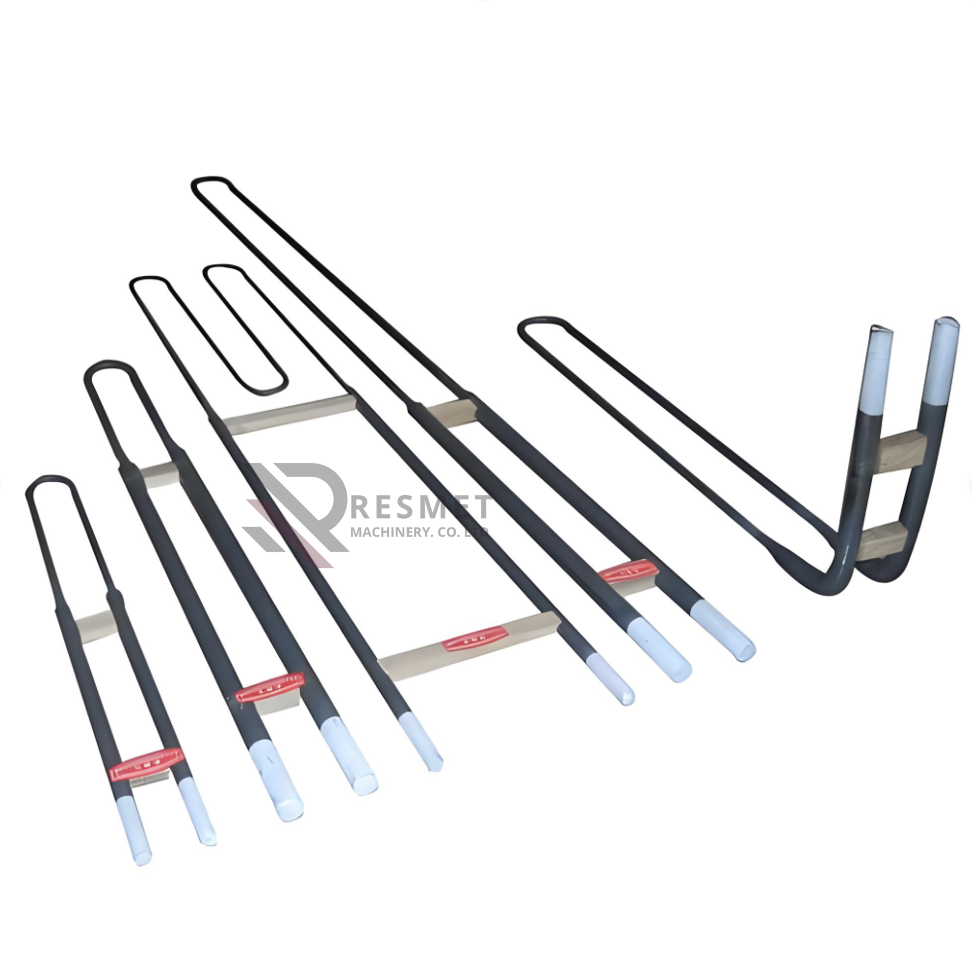
Product Name: MoSi₂ Molybdenum Disilicide Heating Element
Type: High-Temperature Non-Metallic Electric Heating Element
Maximum Operating Temperature: 1700–1800°C
The MoSi2 molybdenum disilicide heater is a premium resistive heating element designed for high-temperature industrial furnaces. Manufactured from high-purity MoSi2, it offers excellent oxidation resistance, rapid heating performance, and long service life.
In oxidizing atmospheres, the element forms a dense, self-regenerating SiO₂ quartz protective layer, allowing stable operation at extreme temperatures up to 1800°C. The resistivity of MoSi2 increases with temperature, ensuring efficient heat generation and consistent performance over time. MoSi2 heaters maintain their mechanical strength throughout their lifespan, allowing new and used elements to be installed together without performance issues.
This heater is ideal for industries requiring precise, reliable and energy-efficient high-temperature heating solutions.
1. Density: 5.6–5.8 g/cm³
2. Bending Strength (20°C): 20 MPa
3. Vickers Hardness: 570 kg/mm²
4. Porosity: 0.5–2.0%
5. Water Absorption: 0.5%
6. Thermal Elongation: 4%
7. Emissivity (800–2000°C): 0.7–0.8
MoSi2 heating elements are widely used in:
1. Metallurgy & Steelmaking
2. Glass, Ceramics & Refractories
3. Semiconductor Materials
4. Electronic Components
5. Precision Structural Cermets
6. Optical & Glass Fibers
7. High-Purity Crystal Production
8. Laboratory Furnaces & High-Temperature Processing
Compatible furnace types include:
Tunnel furnaces, roller furnaces, muffle furnaces, vacuum furnaces, smelting furnaces, glass furnaces, and various industrial electric ovens.
1. Extremely high-temperature resistance (up to 1800°C)
2. Excellent oxidation and corrosion resistance
3. Fast and stable heating performance
4. Long operational lifespan
5. Low deformation at high temperature
6. Self-regenerating SiO₂ protective layer
7. Safe, reliable, and easy installation and maintenance
8. Compatible with automatic power supply systems for precise temperature control
1. Use corundum brick furnace linings with Fe₂O₃ content <1%
2. Avoid hot gas escaping toward cold ends to protect connectors
3. Handle with care—MoSi₂ is brittle at low temperatures
4. Use asbestos/porcelain mandrels for secure support
5. Ensure plug bricks are made from foam-corundum and can be easily removed
6. Avoid tension and twisting of conductive tapes
7. Maintain correct spacing and balanced suspension of heating elements
8. Follow guidelines to prevent bending, stress, or thermal-shock damage